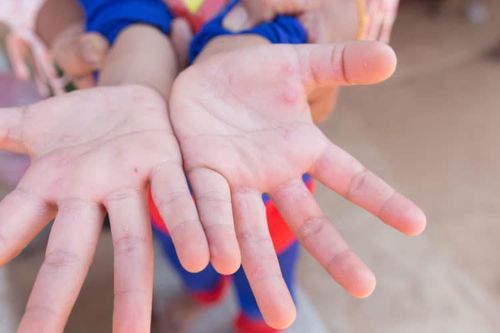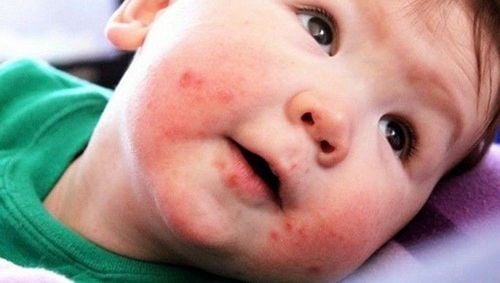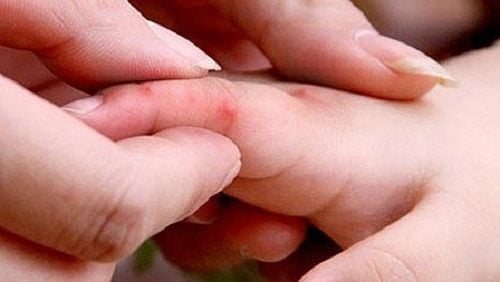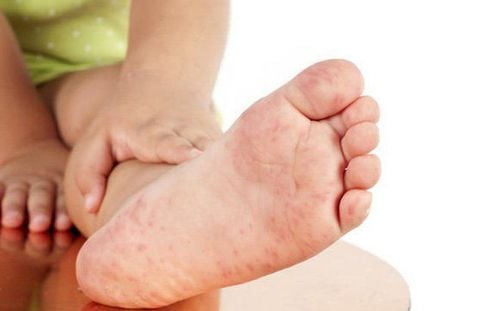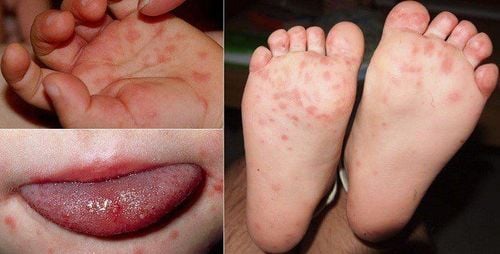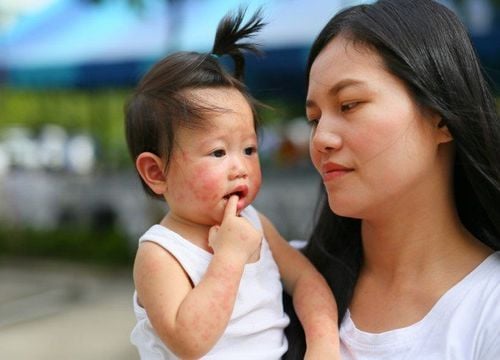This is an automatically translated article.
Article written by Doctor Nguyen Thai Ngoc Chau - Neonatal Pediatrics Department, Vinmec Phu Quoc International General Hospital
Summer is often a time of increase in hand, foot and mouth disease. The disease has no vaccine as well as specific treatment, can cause complications. Therefore, parents need to closely monitor their child's symptoms for appropriate treatment.
1. What is hand, foot and mouth disease?
Hand, foot and mouth disease is an acute bacterial infection transmitted by enteroviruses of the Enterovirus family. The most common pathogens are Coxsackievirus A16 (CA16) and Enterovirus 71 (EV71).
After spreading from person to person through the gastrointestinal tract, the virus will multiply and multiply in the lymphoid tissues in the pharynx and gastrointestinal tract. Then, the virus enters the bloodstream, reaching other organs such as the central nervous system, heart muscle cells, liver cells, and skin. From there, causing a typical scene of hand, foot and mouth disease.
2. When does hand, foot and mouth disease occur?
The disease usually occurs in children under 5 years old, especially in children under 3 years old. The disease can occur in epidemics or sporadic cases. Children in the same nursery can get the infection easily. The disease occurs all year round. In Vietnam, the disease usually increases from February to April and September to December every year.
3. What are the stages of hand, foot and mouth disease?
Knowing the stages of hand, foot and mouth disease will help parents actively monitor and respond promptly to their child's illness.
The incubation period lasts an average of 3-6 days. The virus is transmitted directly from nasal, oral, fecal secretions, or airborne droplets through the mouth-to-mouth or fecal-oral route. Items and toys that children often put in their mouths are also sources of infection that need attention.
Onset stage: + Fever depending on severity: Mild, moderate, or high fever.
+ May be accompanied by vomiting, diarrhea, loose stools without sputum, no blood.
Full-blown stage: + Skin lesions: An erythematous papule-like rash that is raised on the skin or vesicles with a size of 2-10mm, clear fluid, sometimes slightly cloudy on the erythematous background. The rash usually appears on the palms, soles, knees, elbows, buttocks, and genitals. Blisters rarely burst, heal without scarring, skin superinfection after viral infection is rare.
+ Mucosal lesions: The vesicles in the oral mucosa spread rapidly into ulcers 2-3 mm in diameter. Typical locations in the anterior ulnar region of the tonsils, uvula, tonsils, and soft palate. The ulcer is well-defined, the margin is usually smooth, the bottom of the ulcer is shallow and white. Children will often reduce feeding, sucking because of pain, crying and salivating continuously due to inability to swallow.
Remission phase: + If there are no complications, after about 7 days from the onset of the disease, the child will reduce fever, eat and drink, stop crying. The sores in the mouth heal gradually, the skin blisters collapse and disappear, if broken, they will close, leaving dark bruises over time.
4. How is hand, foot and mouth disease classified?
Hand, foot and mouth disease is classified into 4 degrees according to the severity of the disease:
-Grade 1: Only hand, foot and mouth rash and/or mouth ulcers
-Grade 2:
+Grade 2a: The child has signs of severity 1 and accompanied by one of the following:
Occasional slight startle (< 2 times/30 min) Lethargy, trouble sleeping, unreasonable fussing Fever for more than 2 days OR at least 1 fever ≥ 39 oC Vomiting a lot. + Grade 2b: Grade 1 sign accompanied by one of the following two groups of symptoms:
Group 1: One of the following: Startled at the doctor's examination Startled ≥ 2 times/ 30 minutes Startled, accompanied by one of 2 following signs: Somnolence or Pulse > 130 times/minute (when the child is lying still, no fever) Group 2: One of the following manifestations: Tremor, tremor, unsteady sitting, unsteady walking , le Sudden weakness or flaccid paralysis Cranial nerve paralysis (swallowing, voice changes...) High fever difficult to lower (anal temperature ≥ 39 oC, antipyretic but not helping) Pulse > 150 beats/min (when the child is lying still, no fever) -Grade 3: Grade 1 sign accompanied by 1 of the following:
Pulse > 170 times/minute (when the child is lying still, no fever) Sweating generalized or localized cold Blood pressure increases with age Rapid breathing with age Stiff limbs, coma Abnormal breathing: Having one of the following signs: Apnea breathing Abdominal breathing Shallow breathing Wheezing Wheezing in -Grade 4: Signs of grade 1 with one of the following criteria:
Apnea, hiccups Cyanic, SpO2 index decreased to <92% Acute pulmonary edema Shock At grade 2-4, if the child is untreated or does not respond to treatment, death occurs in the setting of cardiovascular collapse and pulmonary edema.
5. How is hand, foot and mouth disease treated?
Currently, there is no specific medicine to treat hand, foot and mouth disease, only supportive treatment. Ensuring adequate nutrition, improving physical condition is very important.
Children with hand, foot and mouth disease need to be closely monitored, early detection of complications and active treatment of complications if any.
Indication for treatment depending on the severity of the disease
-Grade 1: Outpatient treatment and re-examination
Give children paracetamol at a dose of 10-15mg/kg/time, every 4-6 hours to reduce fever and pain when There are mouth ulcers that make the child unable to eat. Give children plenty of fluids, liquid foods, and oral care to avoid superinfection. Re-examination every 1-2 days within the first 7 days of illness. Children with fever must be re-examined every day until the fever is gone for 48 hours. Signs that need to be taken to the hospital immediately: High fever ≥ 39 degrees C, rapid breathing, tired breathing, startling, shaking limbs, unsteady gait, irritability, trouble sleeping, vomiting a lot, skin rash, vomiting sweating, cold hands and feet, rapid convulsions, coma. - From 2 to 4: Children need to be hospitalized for treatment
Currently, there is no vaccine to prevent hand, foot and mouth disease. Therefore, the main preventive measure is still personal hygiene, washing hands with soap (especially after changing clothes, diapers, after contact with feces, saliva), washing toys, toys, etc. equipment, floors with Chloramin B or javel water, isolate sick children within 7-10 days starting from the time of illness onset.
Please dial HOTLINE for more information or register for an appointment HERE. Download MyVinmec app to make appointments faster and to manage your bookings easily.





